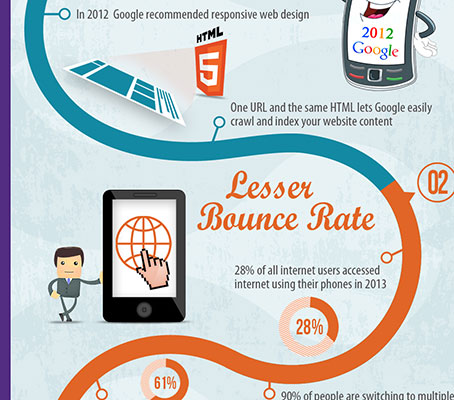The Advancement Of Site Layout: From Earlier Times To Now
The Advancement Of Site Layout: From Earlier Times To Now
Blog Article
Material Written By-Kahn Trolle
In the past, web sites were easy and focused on info. Navigation was straight, and layout was for desktop computers. Currently, customer experience is crucial. Data overviews styles for simple navigating. Responsive formats fit various gadgets. Today, dark setting reduces pressure, and minimalist menus boost navigating. Interactive attributes engage users, and strong visuals stick out. AI combination enhances involvement. See how design has evolved to enhance your on-line trip.
Very Early Days of Website Design
In the very early days of web design, simplicity reigned supreme. Sites were standard, with restricted colors, fonts, and designs. The focus was on giving information rather than showy visuals. Individuals accessed the web with slow dial-up connections, so speed and functionality were key.
Navigating food selections were straightforward, usually situated on top or side of the web page. Websites were created for home computer, as mobile browsing had not been yet common. Material was king, and developers focused on easy readability over complex style elements.
HTML was the key coding language made use of, and developers needed to work within its constraints. Computer animations and interactive functions were marginal compared to today's criteria. Websites were static, with little vibrant web content or customized customer experiences.
Surge of User-Focused Design
With the advancement of website layout, a shift towards user-focused design principles has ended up being progressively noticeable. Today, producing sites that prioritize user experience is vital for involving visitors and accomplishing service objectives. User-focused design includes comprehending the needs, preferences, and behaviors of your target audience to tailor the website's format, web content, and features appropriately.
Designers now conduct detailed study, such as user surveys and use testing, to collect insights and comments straight from users. This data-driven technique aids in developing user-friendly navigation, clear calls-to-action, and visually attractive interfaces that reverberate with visitors. By https://www.thedrum.com/opinion/2022/01/26/why-ai-critical-marketing-success at the center of the design procedure, web sites can supply a more customized and enjoyable experience.
Responsive style has additionally become a key element of user-focused design, making sure that internet sites are maximized for numerous tools and display sizes. This flexibility boosts ease of access and usability, catering to the diverse ways customers connect with web sites today. In essence, the rise of user-focused design signifies a change in the direction of developing digital experiences that focus on the requirements and expectations of the end individual.
Modern Trends in Website Design
Discover the most recent fads shaping website design today. One noticeable fad is dark mode design, supplying a smooth and contemporary look while decreasing eye stress in low-light environments. Another crucial fad is minimalist navigating, simplifying food selections and improving user experience by concentrating on essential elements. Incorporating micro-interactions, such as computer animated switches or scrolling effects, can create a much more interesting and interactive internet site. Receptive style continues to be vital, guaranteeing smooth individual experiences throughout various tools. Furthermore, using vibrant typography and unbalanced formats can add aesthetic interest and accentuate certain web content.
Incorporating AI innovation, like chatbots for client support or individualized recommendations, boosts customer interaction and simplifies processes. Availability has also become a significant pattern, with developers prioritizing inclusive style techniques to accommodate diverse customer requirements. Accepting sustainability by optimizing web site efficiency for rate and performance is one more emerging pattern in website design. Collaborating with customer responses and data analytics to repeat and improve style constantly is vital for remaining relevant in the ever-evolving digital landscape. By embracing these modern trends, you can produce a visually appealing, easy to use internet site that reverberates with your target market.
Final thought
As you review the evolution of internet site layout from the very early days to currently, you can see how user-focused design has actually come to be the driving force behind modern-day fads.
Embrace the journey of modification and adaptation in website design, constantly keeping the customer experience at the forefront.
Keep current with the most up to date trends and technologies, and never ever quit progressing your approach to create visually sensational and easy to use web sites.
Evolve, adapt, and produce - the future of web design remains in your hands.
